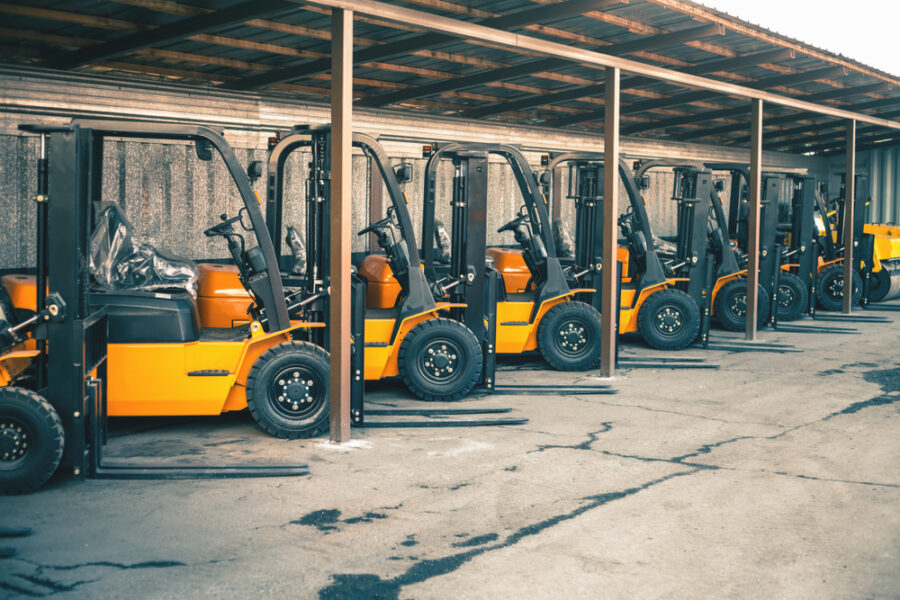A forklift has several components that make it functional. There are three hydraulic lift knobs, one of which lowers the forks, the second of which tilts the forks, and the third of which moves the load from side to side. It also has directional controls that control how far the forklift can go forward or backward. It also has a brake pedal and an accelerator pedal to speed it up more.
Tires
Forklift tires play an essential role in the performance of a forklift. They offer a cushion between the forklift and the ground, making the ride more comfortable for the operator. Worn tires can cause operator fatigue and frustration. They also decrease fuel efficiency, which means a higher operating cost. When choosing the right forklift tires for your needs, contact a company and check the availability of the Fast moving Toyota forklift products.
Tires on a forklift should be adequately maintained to ensure long service life. Regular maintenance checks can also help avoid downtime and accidents in the workplace. Depending on the type of tire on your forklift, the air pressure must be adjusted accordingly.
Wheels
Forklift trucks have two wheels, the driven wheel, and the traction wheel. The driven wheel is generally nonpneumatic and has a rubber tread. The traction wheel is attached to the driven wheel with an adaptor assembly. The adaptor assembly transmits torque from the driven wheel to the traction wheel. The added weight of the traction wheel is minimal.
Cockpit controls
Forklift drivers need to understand and use the cockpit controls to ensure safety. Without proper authorities, a forklift can become dangerous or even crash, putting pedestrians and other workers in danger. For this reason, forklift drivers should be well-trained and have operational experience. Additionally, the driver should be familiar with the forklift’s fluid levels, including the type of fluid used.
Another important forklift feature is the warning indicators. A forklift’s warning lights and horns can help keep other employees and nearby workers safe. It is also essential to check the controls, including the braking system and harnesses, to ensure they operate correctly.
Lift cylinder
The lift cylinder of a forklift is a hydraulic mechanism that tilts the forklift’s mast. It consists of two components: a first valve and an operating member. The first valve controls the fluid supply to the cylinder while the operating member tilts the cylinder in proportion to the flow rate of the liquid. A second valve is positioned between the cylinder and the first, which controls the maximum flow rate of fluid that passes through the cylinder.
The hydraulic system of a forklift is a complex system that varies in size and power. While it varies greatly in size and strength, it consists of the same essential components. Hydraulic parts minimize heat energy and increase efficiency. Hydraulic power packs consist of a hydraulic pump, motor, actuator, and control valves. The lift cylinder is a vital part of a forklift and works in conjunction with the lift chain.
Battery
It is essential to maintain the battery of a forklift in good condition. Many factors can affect the service life of the battery. One of them is the amount of water in the electrolyte. When the electrolyte content falls below 95%, it will result in a 20% reduction in battery capacity.
Another factor to consider is the load weight. Heavier loads require a higher lift and a longer route, requiring a more excellent capacity battery. For example, the most demanding applications can have a load weight of fifteen to twenty thousand pounds. Other factors that may affect the weight of the load include the size and shape of the pallet. Also, heavy forklift attachments, such as hydraulic paper clamps, require extra power to perform their jobs.
Backrest
The backrest of a forklift is an extension that bolts or slides onto the front of the lift truck. It keeps the load firmly against a flat surface, making loading and unloading more accessible and safer. The backrest may be challenging to reach if the operator has to stand for extended periods.
A backrest is crucial because it prevents the load from falling backward onto the operator. It features a steel grid above the forks and is attached to the carriage by heavy-duty steel framing. Its shape allows the load to rest against a flat, square surface to increase safety when loading and unloading.
More Stuff For Your Inspiration:
- No Related Posts
Related posts
Categories
- Around The World (369)
- Business (57)
- Education (9)
- Home Improvement (23)
- Humor (191)
- Inspiration (512)
- Lifestyle (21)
- Motivation (2)
- News (31)
- Photo of the Day (257)
- Photography (105)
- Technology (61)
- Travel (8)



